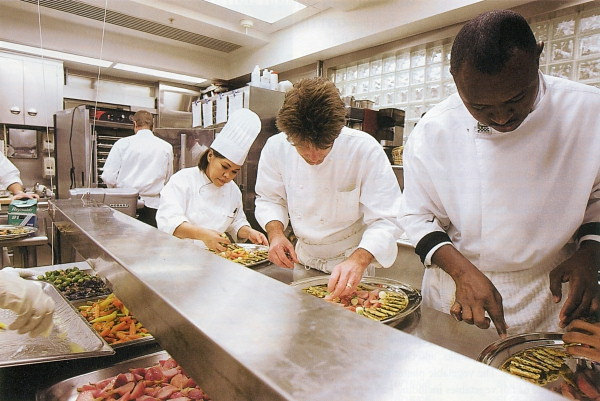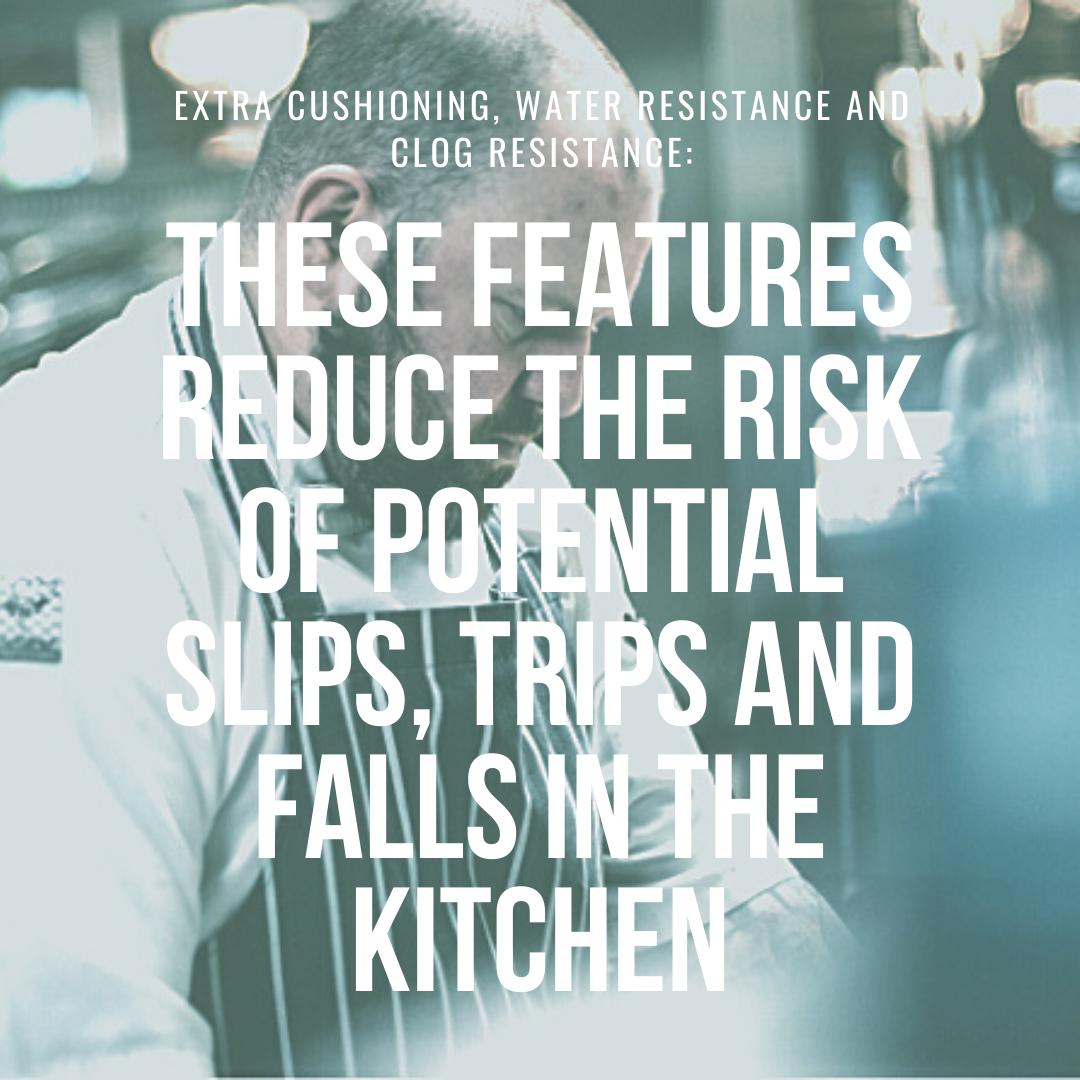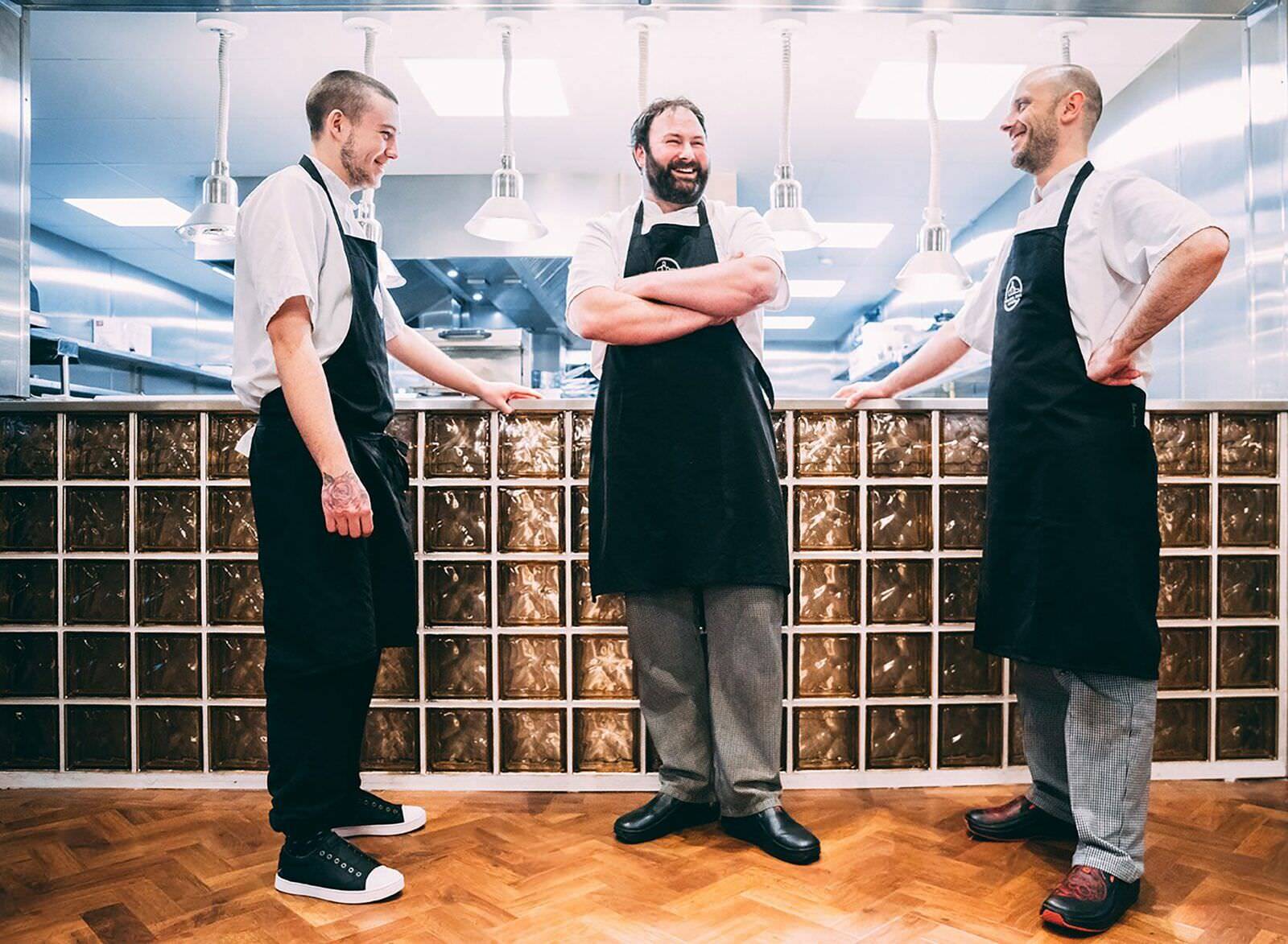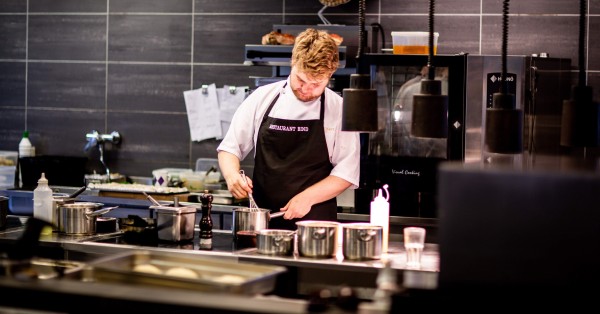Kitchens can be potentially dangerous environments to work in. There are electrical and gas equipment, hot surfaces, harmful substances, sharp objects and lots of staff moving around to be aware of. These all increase the chances of possible incidents. To keep everyone safe, here are health and safety rules that must be followed in the kitchen.
Clean Up Any Spills
Whenever you spot a spillage on the floor, act immediately to dry the surface where possible. Wet floors are usually the biggest culprit of slips, trips and falls which can lead to potential injuries in the kitchen. If you can’t dry the area right away, make sure to place a wet floor sign to make everyone in the kitchen aware.
Stick to the Relevant Zones
Work zones in the kitchen help maximise safety, avoid collision and reduce the chaos you may find in a kitchen. First, create separate working zones for:
- Serving and plating
- Cooking
- Cleaning
- Cutting and prep work
- Frying
- Baking
Everyone in the kitchen should always work within their designated zone to avoid potential collisions or cross-contamination. Leave this for your head chef to decide the safest areas for each work zone. Also, consider any rules you’ll need to amend due to COVID-19. This might include limiting the number of people in the kitchen and working at a safe distance, for example.
Keep Work Areas Tidy
Chopping vegetables, dicing herbs, seasoning meats and prep work can all result in food falling on the floor. Although it seems minor, they can still be responsible for possible slips. It’s also good teamwork to clean up after yourself rather than letting someone else always clean up after you.
Announce Your Whereabouts
Tight spaces, hot food and lots of bodies in a kitchen mean it’s always important to communicate. Make it a rule for everyone in the kitchen to announce their whereabouts and let others know when moving away from a station. Phrases like ‘corner’, ‘behind’ and ‘hot behind’ are easy to remember and follow.

Understand Food Safety
Although the chef is usually the one who handles food the most, food safety rules should be something everyone follows - from chefs to servers. Some rules might sound simple, but they’re also easy to forget.
- Keep raw meats and poultry separate from fresh produce.
- Use separate chopping boards for fresh vegetables and raw meat to avoid cross-contamination.
- Disinfect and wipe down all surfaces when handling raw food.
- Wash all equipment in hot, soapy water.
- Wash hands routinely.
- Change gloves regularly if you wear them during prep.
- Remove clutter from surfaces.
- Keep all knives sharp and in a safe area.
- Avoid the food danger zone (4-60℃) when cooking, storing, keeping food on warmers or ice to reduce risks of possible illness.
- Store food in airtight containers that are clearly labelled and dated.
Stay Hydrated
Although health and safety rules in the kitchen help to keep others safe, you also need to look out for yourself. Kitchens are warm places for everyone. Chefs work right above the heat and servers often have to run in and out of the kitchen too. When you get an opportunity, take a moment to rest and drink plenty of water to avoid dehydration.
Use the Oldest Products First
This is where stock rotation, correctly labelling and dating food is useful. Make sure to use the oldest products first and organise them in a way where the newest products are always behind the oldest. It’s also important to make everyone else aware of this rule too. This way, nobody will use something newer when something older is perfectly fine to use.
Cover Any Cuts
If somebody handling food has suffered from a cut, the rule should be for them to wash their hands and if possible, wear gloves to avoid contaminating food. Communicate this rule to everyone and it’s less likely staff will forget and put themselves and others in possible danger.
Wear Safe, Comfortable Clothing and Shoes
This isn’t a health and safety rule anyone working in the kitchen should ignore. Although normal chef whites and shoes might seem fine to wear because it meets the uniform requirements, there’s more you need to consider.
Clothing
Chefs must wear cotton chef jackets with knotted buttons to protect them from the heat of the kitchen, burns over open gas flames and splashes from boiling water. Enforcing this rule means buttons won’t melt and the natural fabric ensures more comfort thanks to breathability.
Shoes
When wearing slip-resistant footwear in the kitchen, they must meet the relevant ISO standards. This ensures the shoes are safe to wear on multiple surfaces. For further safety, look for styles that are comfortable with extra cushioning, offer water resistance, waterproof materials, breathability, clog resistance, ventilation and more. All of these features help reduce the risk of potential slips, trips and falls in the kitchen.

There’s a lot more to consider for kitchen health safety that everyone should follow. If you thought you had everything covered but realise there’s more to know about kitchen health and safety, make sure to download our latest in-depth guide.
Everything You Need to Know About Kitchen Health and Safety
Safety regulations, ergonomics, hygiene, slips and fall prevention - there’s a lot to consider when keeping everyone safe in your kitchen. Our latest guide is full of unique insights and advice on maintaining kitchen safety, management tips, techniques and much more.

